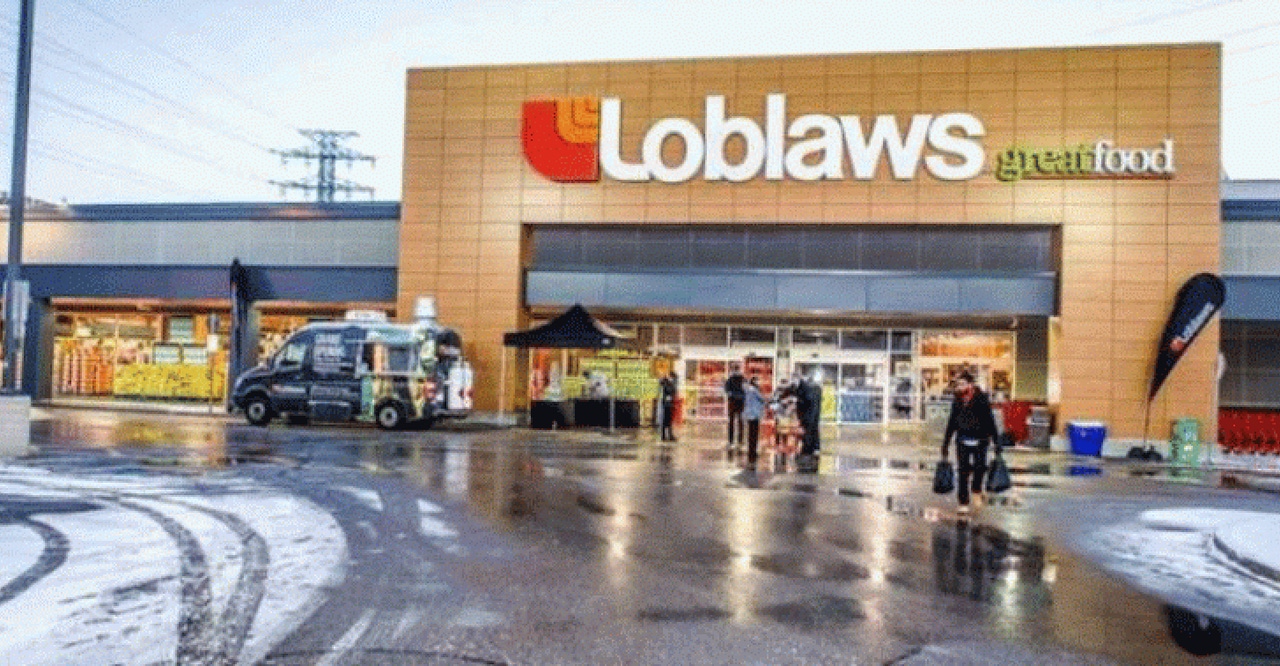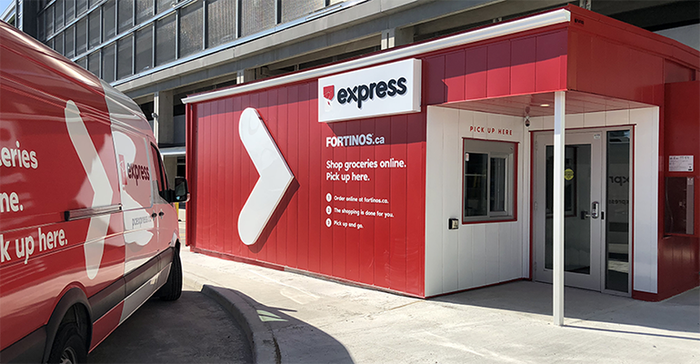Food retail boosts Loblaw Cos. in second quarterFood retail boosts Loblaw Cos. in second quarter
E-commerce sales jump 280% as Canadian retailer adapts to COVID-19, invests in digital
July 24, 2020

Loblaw Cos. saw a sharp rise in retail sales for the fiscal 2020 second quarter, with coronavirus-driven demand powering gains of more than 11% in food retail sales and 280% in online grocery sales.
For 12 weeks ended June 13, overall retail sales came in at $11.77 billion (Canadian), up 7.9% from $10.91 billion a year earlier, Brampton, Ontario-based Loblaw said yesterday. Excluding franchise consolidation, retail sales were up 7.2%.
Food retail sales surged 11.3% to $8.75 billion in the second quarter from $7.86 billion a year ago. Same-store sales in food retail also jumped by double digits, climbing 10% versus a 0.6% uptick in the prior-year period. Loblaw said food retail comparable-store sales were lifted by the impact of COVID-19, while the timing of Easter had a nominal effect on growth.

Loblaw President Sarah Ruth Davis said, “Our national [e-commerce] platform has proven to be flexible and scalable, providing our customers same-day service and a choice of pickup or delivery, because we know that one size does not suit all.
Though food retail traffic declined in the quarter, the food shoppers’ basket size increased, the company said. The average article price in food retail during the quarter was 4.6%, up from 3.3% in the year-ago period.
“Food sales growth included significant changes within the category mix and the benefit from strong demand for essential food categories,” Loblaw Cos. Chief Financial Officer Darren Myers said in a conference call with analysts yesterday. “Consumers purchased fewer non-essential products, and demand shifted towards conventional [grocery] formats, with our market division delivering strong same-store sales growth of 18.8% and our discount division growing 4.9%.”
Sarah Ruth Davis, president of Loblaw Cos., noted a “distinctly different performance” between the company’s discount and market food retail businesses.
“Since the onset of COVID, discount stores have been challenged by a swing in shopping habits towards full-shop conventional stores. Customers are making that choice, even at a cost. Further, there was an overall lag in non-food categories, which are an important part of our larger format discount mix,” Davis said in the call.
“We have complete confidence in the strength of our discount food network, which accounts for about 60% of our supermarket business. Given the sales mix, we are disproportionately exposed to a shift from discount. But we are also uniquely poised for a swing back,” she explained. “By choice or necessity, discount shoppers will return to discount banners, and we will be there for them when they do. We are already seeing the start of a return to discount, and we expect that to quicken if the economy tightens in any meaningful way. Our competitors are investing in the discount sector, and we intend to maintain our share.”
 Loblaw’s conventional supermarket segment was “a clear winner in the quarter, showing consistent strength across the country,” according to Davis (left). “It was not only our strongest performer internally, it took considerable share from the market. At the same time, it hit record-high levels of customer satisfaction.”
Loblaw’s conventional supermarket segment was “a clear winner in the quarter, showing consistent strength across the country,” according to Davis (left). “It was not only our strongest performer internally, it took considerable share from the market. At the same time, it hit record-high levels of customer satisfaction.”
Second-quarter retail sales for Loblaw’s Shoppers Drug Mart chain dipped 0.9% to $3.02 billion from $3.05 billion in the fiscal 2019 period. Drug retail same-store sales decreased fell 1.1%, which Loblaw attributed to a negative impact from COVID-19, compared with a prior-year gain of 4%.
Front-end drug retail comp sales grew 3.3%, the same as a year ago. Comparable pharmacy sales declined 6.2% year over year. Prescriptions filled rose 4.3% on an overall and same-store basis, but average prescription value dropped 11.2%, compared with a 0.6% increase a year ago. Loblaw said temporary changes in prescription refill limits from 90 days to 30 days, due to COVID-19, contributed to a net gain in prescription count but a decrease in average prescription value.
Meanwhile, e-commerce was a “bright light” for Loblaw in the second quarter, with the market division delivered a “standout” performance in the company’s omnichannel transition, Davis reported.
“In the quarter, our e-commerce business grew 280%, and year-to-date, we have reached $1.2 billion in e-commerce sales, surpassing our 2019 full-year achievement of $1 billion. We are on a run rate of sales that we did not expect for years,” she told analysts on the call.
“Our national platform has proven to be flexible and scalable, providing our customers same-day service and a choice of pickup or delivery, because we know that one size does not suit all,” Davis continued. “Tripling e-commerce sales years ahead of plan brought incremental cost for the business. We scaled every aspect of our PC Express offering, from labor to technology to micro-fulfillment centers. All of these costs were anticipated; they just weren’t expected so soon. This creates a short-term headwind with long-term promise. These are costs that we are willing to bear, as we know this is and will continue to be an area of competitive advantage. COVID dynamics — from investments and safety, to the cost of building e-commerce, to changing shopping patterns — mean we need to keep our hands on the financial and operating levers.”
For the 24-week fiscal 2020 first half, retail sales advanced 9.3% to $23.35 billion. Excluding the consolidation of franchises, retail sales growth was 8.2%. Food retail sales were up 11.1% to $17.08 billion for the half, with same-store sales rising 9.8%. Shoppers Drug Market turned in first-half retail sales of $6.27 billion, for an increase of 4.8%. Drug retail same-store sales rose 4.7%, reflecting gains of 6.9% in the front end and 2.1% in the pharmacy.
“The [second] quarter ended with the gradual easing of restrictions and the general sense that we were establishing a new normal,” Davis said. “We fared well with strong underlying performance in the face of unexpected challenges. More importantly, the quarter was a major confidence builder, underlying the strength of our strategy.”
At the bottom line, Loblaw Cos.’ net income (common shareholders) was $169 million, or 47 cents per diluted share, in the fiscal 2020 second quarter, compared with $286 million, or 77 cents per diluted share, a year earlier. On an adjusted basis, net earnings (common shareholders) totaled $266 million, or 74 cents per diluted share, versus $373 million, or $1.01 per diluted share, in the prior-year period.
Analysts, on average, had projected adjusted earnings per share of 78 cents for the 2020 quarter, according to Zacks Investment Research.
Loblaw noted that it made $282 million in COVID-19 investments during the second quarter. Of that total, $180 million stemmed from compensation costs, including $25 million for a one-time bonus for store and distribution center employees. The company said it also recorded $17 million in restructuring and related charges, mainly from process and efficiency initiatives.
“Conditions in the second quarter were unusual and challenging, and I want to begin by thanking the 200,000 colleagues and the leadership at all levels that carried us through. The team’s performance was nothing short of remarkable,” Loblaw Cos. Executive Chairman Galen Weston said in the analyst call. “The quarter confirmed the fundamental importance of a strong core business. There were consumer shifts that favored our market stores and COVID conditions that slowed discounts and shoppers. But at the peak of the crisis, more Canadians turned to us to stay healthy and well-fed than any other grocer.”
Over the last 12 months, Loblaw opened 13 food and drug stores and closed seven locations. The company finished the quarter with 2,431 stores overall, including 549 corporate-owned and 539 franchised grocery stores and 1,343 Shoppers Drug Mart/Pharmaprix associate-owned drugstores.
About the Author
You May Also Like





.webp?width=300&auto=webp&quality=80&disable=upscale)
